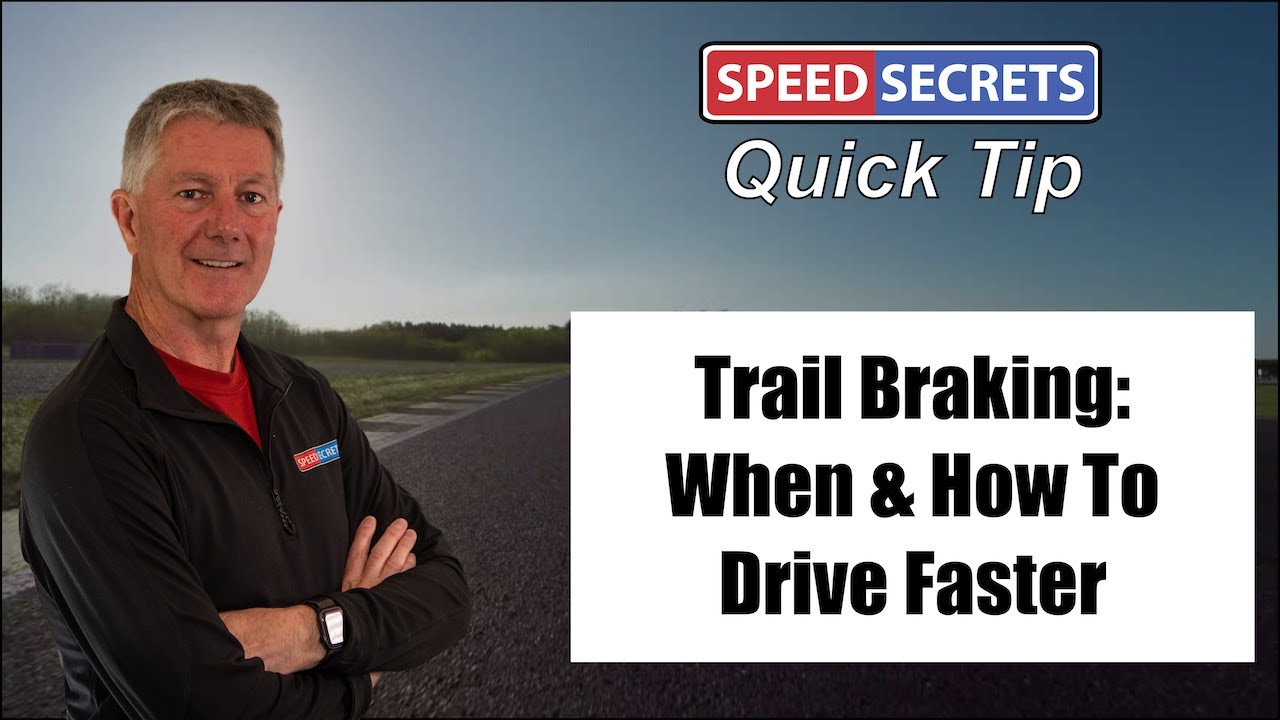Q: “I’ve heard the term trail braking. I’ve been told that the best drivers use it. I’ve been told that I should use it. But I’m not sure exactly what it is, and whether I’m already doing it or not. I think I am, but not sure. Can you tell me what it is, and how to do it?”
A: Trail braking is the act of easing – or trailing – your foot off the brakes as you turn into a corner. It’s a smooth release of the brake pedal, as opposed to popping your foot off the brake pedal. If your foot has come off the brake pedal even one foot past the point you’ve turned into the corner, then you have trail braked; if you slowly ease your foot off the brakes and finally come off near the apex of the corner, you have trail braked. So, you can trail brake a little or a lot.
Watch Trail Braking: When & How to Drive Faster at https://youtu.be/JfhNwKF4Csw.
And just to be clear, trail braking is not necessarily when you brake all the way to the apex. If you did do that, you would be trail braking, but you don’t have to brake that late into a corner to have trail braked. Like I said, if you’re on the brakes for even a foot past the turn-in point, you’re trail braking. Also, you can trail brake with either your right or left foot.
Why trail brake? First, it helps you maximize the use of the tires’ grip. If you immediately took your foot off the brakes – did all your braking in a straight line approaching a corner – and then began turning into corner, there would be a small amount of time while the tires are building up to maximum corner force where they would not be used as much as they could. By trailing off the brakes, you gradually trade off braking traction for cornering traction – you blend the braking and cornering forces. In doing so, you’re driving the car at or closer to the limits more.
The second reason for using trail braking is to help manage the weight transfer. As you know, when you brake, you transfer weight onto the front of the car, giving the front tires more traction. And as you lift your foot off the brakes, weight transfers toward the rear of the car – or, at least, it unloads the front tires. So, when you’re turning into a corner, you want load on the front tires to give them more grip and help them turn the car. By slowing the release of pressure off the brake pedal – trail braking – you keep the front tires loaded, allowing them to help the car change direction.
Many drivers think that trail braking is some super-advanced-trick technique that only elite drivers are capable of using. Wrong. It’s basic stuff. In fact, I suspect you are trail braking already, at least some amount. Many drivers release the brakes smoothly, and in the process are trail braking. Of course, some drivers literally pop their foot off the brake pedal, which unloads the front tires, making the car not turn in very well – which makes them slower. And those who are trail braking without really knowing – and you may be one of those drivers – could learn to use it more intentionally to their advantage.
Finally, there are some instructors who say that inexperienced drivers should never trail brake. They are wrong. It’s a terrible thing to teach someone the wrong way of doing something, only then have to change the student’s/inexperienced driver’s habits later. Trail braking is NOT dangerous! Teaching someone the wrong thing can be. Would you ever teach a young child the wrong words because you think they’re not ready to learn the right ones? Of course not. And trail braking is as basic as learning the right words. All you have to do is be aware of how slowly and smoothly you release the brake pedal as you’re turning into corners.
Oh, and there is one more thing: you don’t have to trail brake in every single corner. As a general guideline, the slower and tighter the corner (think of a hairpin corner), the more you’ll want to trail brake to help turn the car with the weight transfer; the faster and longer the corner, the less you should trail brake (and possibly not trail brake at all).

